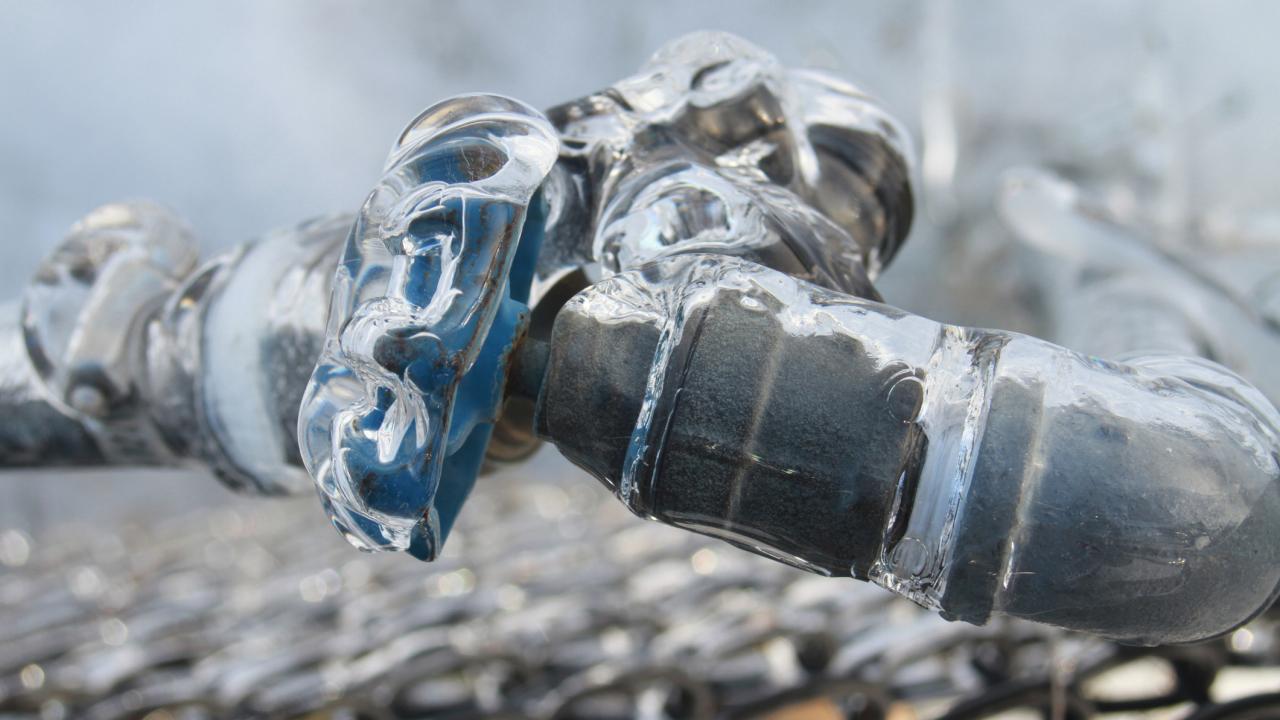Avoiding Frozen Pipes in Cold Weather: Essential Strategies
Avoiding Frozen Pipes in Cold Weather: Essential Strategies
Blog Article
This article down the page involving Prevent Frozen Pipes is quite interesting. Read it yourself and see what you think about it.
:strip_icc()/snow-outdoor-faucet-pipes-4af65d1e5e904fb1aa7bf74071fe5d89.jpg)
Cold weather can wreak havoc on your pipes, particularly by freezing pipelines. Below's just how to prevent it from taking place and what to do if it does.
Introduction
As temperature levels decline, the risk of icy pipelines rises, possibly leading to costly repair work and water damages. Recognizing just how to prevent icy pipelines is critical for house owners in cold climates.
Recognizing Frozen Pipes
What creates pipelines to ice up?
Pipes ice up when exposed to temperature levels below 32 ° F (0 ° C) for expanded durations. As water inside the pipelines freezes, it increases, putting pressure on the pipe wall surfaces and potentially creating them to break.
Dangers and damages
Frozen pipes can cause water disruptions, residential property damage, and expensive repair services. Ruptured pipelines can flooding homes and create substantial architectural damage.
Indicators of Frozen Water Lines
Recognizing frozen pipelines early can avoid them from rupturing.
How to identify frozen pipelines
Try to find lowered water circulation from taps, uncommon odors or sounds from pipes, and visible frost on exposed pipes.
Avoidance Tips
Shielding prone pipelines
Wrap pipes in insulation sleeves or utilize warm tape to protect them from freezing temperatures. Focus on pipelines in unheated or external areas of the home.
Home heating methods
Maintain indoor spaces properly warmed, particularly areas with plumbing. Open cupboard doors to enable cozy air to circulate around pipelines under sinks.
Safeguarding Outside Plumbing
Yard hoses and exterior faucets
Disconnect and drain garden hoses before winter months. Set up frost-proof faucets or cover outside faucets with shielded caps.
What to Do If Your Pipes Freeze
Immediate actions to take
If you suspect frozen pipelines, maintain faucets available to alleviate stress as the ice thaws. Make use of a hairdryer or towels soaked in hot water to thaw pipelines gradually.
Long-Term Solutions
Architectural changes
Think about rerouting pipelines away from exterior wall surfaces or unheated locations. Include additional insulation to attics, cellars, and crawl spaces.
Updating insulation
Invest in top notch insulation for pipes, attic rooms, and walls. Proper insulation aids preserve regular temperature levels and decreases the risk of frozen pipelines.
Verdict
Avoiding frozen pipes needs positive procedures and fast actions. By recognizing the reasons, indications, and safety nets, house owners can secure their pipes during cold weather.
5 Ways to Prevent Frozen Pipes
Drain Outdoor Faucets and Disconnect Hoses
First, close the shut-off valve that controls the flow of water in the pipe to your outdoor faucet. Then, head outside to disconnect and drain your hose and open the outdoor faucet to allow the water to completely drain out of the line. Turn off the faucet when done. Finally, head back to the shut-off valve and drain the remaining water inside the pipe into a bucket or container. Additionally, if you have a home irrigation system, you should consider hiring an expert to clear the system of water each year.
Insulate Pipes
One of the best and most cost-effective methods for preventing frozen water pipes is to wrap your pipes with insulation. This is especially important for areas in your home that aren’t exposed to heat, such as an attic. We suggest using foam sleeves, which can typically be found at your local hardware store.
Keep Heat Running at 65
Your pipes are located inside your walls, and the temperature there is much colder than the rest of the house. To prevent your pipes from freezing, The Insurance Information Institute suggests that you keep your home heated to at least 65 degrees, even when traveling. You may want to invest in smart devices that can keep an eye on the temperature in your home while you’re away.
Leave Water Dripping
Moving water — even a small trickle — can prevent ice from forming inside your pipes. When freezing temps are imminent, start a drip of water from all faucets that serve exposed pipes. Leaving a few faucets running will also help relieve pressure inside the pipes and help prevent a rupture if the water inside freezes.
Open Cupboard Doors
Warm your kitchen and bathroom pipes by opening cupboards and vanities. You should also leave your interior doors ajar to help warm air circulate evenly throughout your home.

We had been shown that write-up on How to prepare your home plumbing for winter weather through a good friend on another web page. Are you aware of another person who is occupied with the topic? Feel free to share it. Many thanks for your time spent reading it.
Go Services Report this page